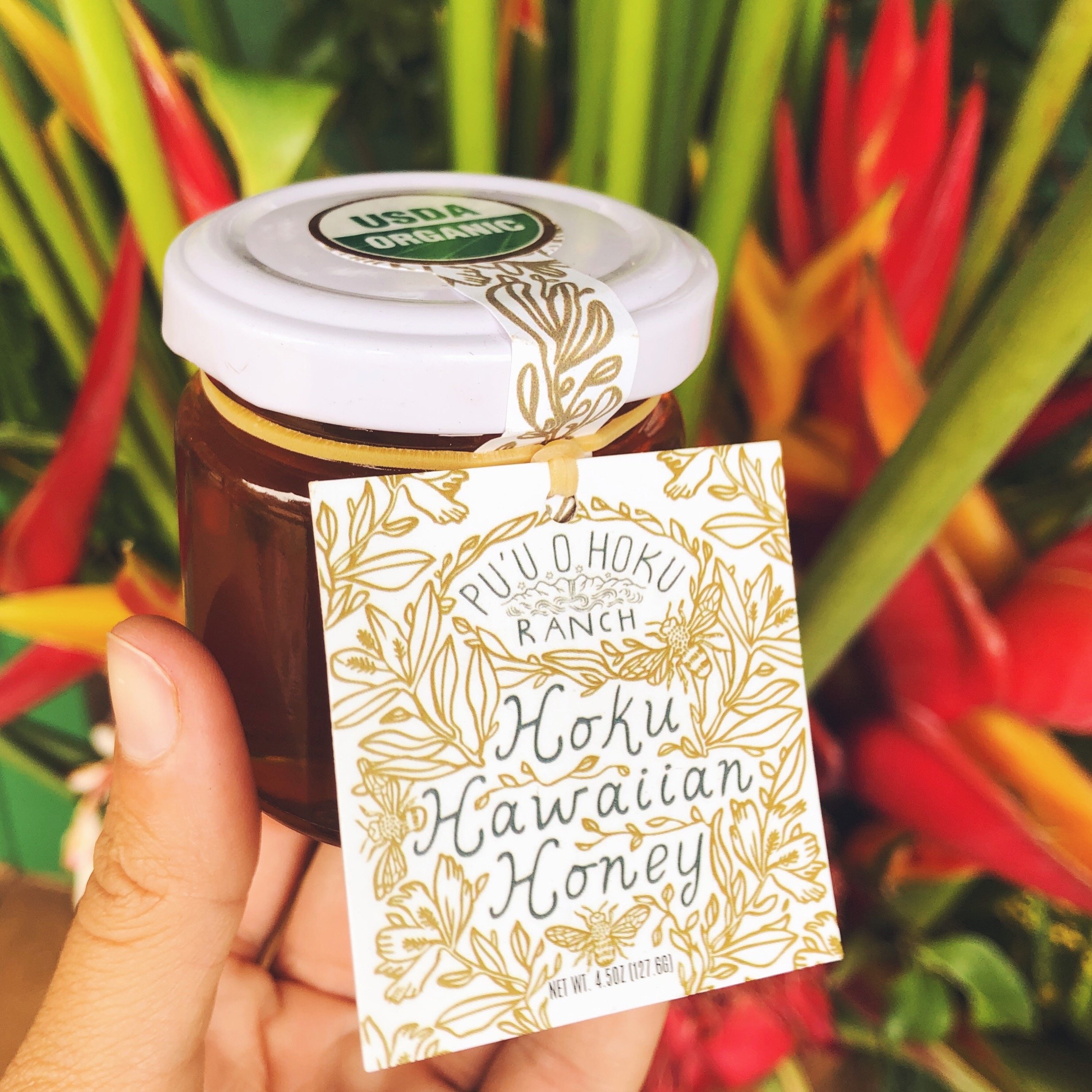Oh, Honey






IT’S A SWEET MOMENT FOR HONEY. PERUSE THE HONEY SECTION OF MARKETS AND YOU’LL FIND SHELVES OF HONEY PRODUCTS HARVESTED FROM REGIONS NEAR AND FAR WITH LABELS THAT RIVAL THAT OF PREMIUM WINE WITH NOTES ON AGING, FARM AND FLOWER NECTAR.
Honey has moved beyond the brown stuff in a plastic bear.
In Hawai‘i, single-location honey producers offer an opportunity to taste honey with a flavor profile that’s unique to the environment of the hive and its inhabitants. Unlike large-scale producers that combine honey harvested from multiple locations, small batch producers harvest from one location. The flora and fauna of every island can be experienced in a jar of Hawai‘i harvested honey.
On O‘ahu’s westside, the Tolentino family has been farming in Lualualei Valley since 1982 and started beekeeping in 2008 as a way to help increase their vegetable farm’s crop yields. With help from the University of Hawai‘i’s Honeybee project, the Tolentino’s adopted their first hive in 2008, the bees thrived, producing a distinctive honey flavored with the taste of the wild kiawe trees, citrus blossoms and the seasonal crops grown on their farm. The demand for their distinctive honey grew and the Tolentino Honey Co. got its start. Today the Tolentinos produce roughly 500 pounds of raw Hawaiian honey a year.
Moloka‘i honey harvested from hives populated by bees that inhabit 14,000 acres of pristine native forest and farmland is produced by Pu‘u O Hoku Ranch. Their namesake honey is one of the few USDA-certified organic honey produced in the United States. The geographic isolation of Moloka‘i’s east end, and the biodynamic and organic farming practices of Pu‘u O Hoku Ranch contribute to test results that show zero contamination from pesticides. Pu‘u O Hoku Ranch was founded more than 30 years ago by filmmaker and conservationist Lavinia Currier.
The making of honey is design thinking at its best. Bees make honey by collecting nectar from flowers using their long tube-shaped tongue. When a bee returns to the hive, it passes this nectar to other bees in the hive by regurgitating the nectar into their mouths. As the process repeats, the nectar is deposited into the honeycomb. The deposited nectar is very liquid and it’s the bees rapidly fluttering wings that help evaporate the water out of the liquid. Once the evaporation is complete the bee seals the honeycomb with a secretion from its abdomen—beeswax!
In its lifetime, one bee produces about half a teaspoon of honey. To experience the true and specific flavors of honey, raw is best. Raw honey is honey that’s been extracted from the honeycomb and poured over mesh to strain out the impurities and is unpasteurized—keeping the vitamins, minerals, enzymes and health benefits intact. The heating process of pasteurization may decrease or remove the antioxidants levels in honey. Honey has natural antibiotic properties and pasteurization is to increase shelf life and maintain viscosity.
To indulge in small batch honey—keep it simple so you can taste the subtle nuances of the source. Butter a thick slice of crusty French bread and drizzle with honey—I like to sprinkle a little salt before drizzling as it amplifies the flavor of the honey. When in season, a ripe fig topped with a heavy dollop of raw honey is amazing. For breakfast, Greek yogurt with honey and nuts will keep your morning bright and sweet.
